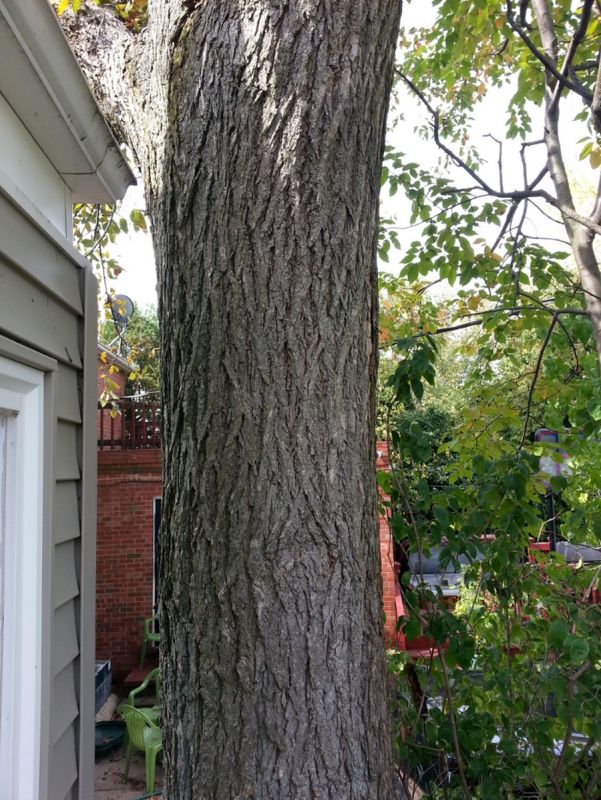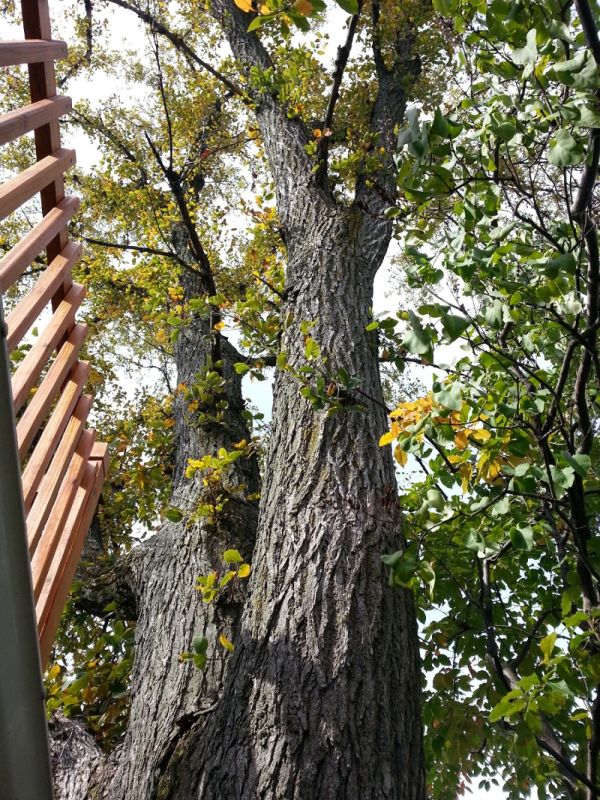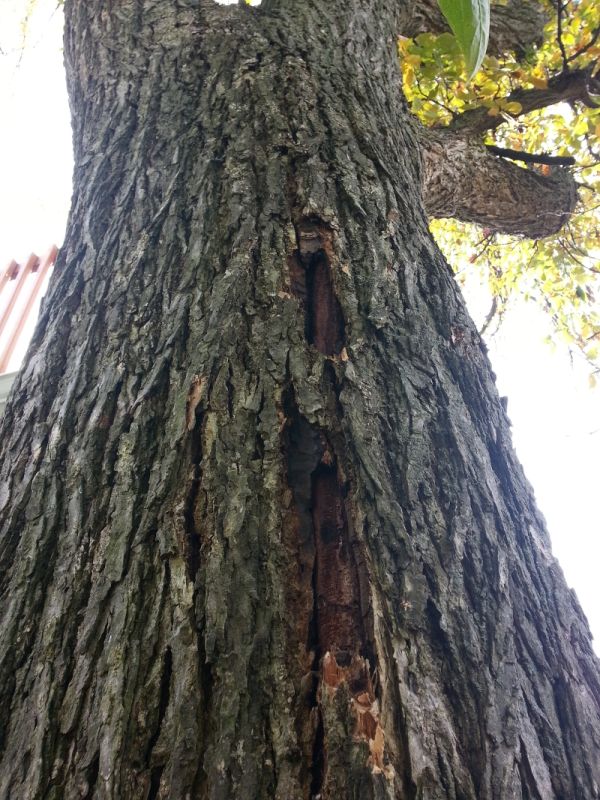Assessing the Value of a Yard Elm Tree
Advice on the character of American Elm wood, tips on drying, and cautions about metal in a yard tree. January 28, 2014
Question
I have a large elm (36" diameter) on my property that is dying, likely of Dutch elm disease. The process has been going on for at least 4 years, with loss of terminal branches, early leaf loss in the late summer, etc. I don't see any changes that make me suspect bacterial infection. I would like to take the logs to a local mill once it is cut down. Is there any way to predict if the lumber will be good enough quality to justify the expense?
Forum Responses
(Sawing and Drying Forum)
From contributor G:
I have worked a bit with red elm. It has beautiful grain but can be a bit of a challenge to work (lots of reverse grain). Grey elm is easier to work but does not have as much character in the grain. As to whether your tree will be usable, I have no idea.
From contributor R:
If the elm is still alive, or if has died within the previous 6 months or less, it will be fine. Elm begins to deteriorate very quickly after death and begins to get very soft and become discoloured. If it has been dead for more than 6 months, the outer 4-6 inches of sapwood may be of no use, but the heartwood will probably be salvageable. If you do have the lumber milled out, be very patient with the drying process. It can take years of air drying to become stable enough to use. If kiln drying, make sure the 1" elm is dried as if it is 6/4" red oak. Dry it very slowly or it will make lovely cork screws.
From the original questioner:
Thanks. Here are a few pictures of the tree. The area without bark on one of the pictures is where I removed some ivy last year. I don't think it is wet wood. Hopefully not, anyway.

Click here for higher quality, full size image

Click here for higher quality, full size image

Click here for higher quality, full size image
From contributor D:
The bark and leaves look like an American elm. After you cut the tree down you have a better idea of the quality of the wood inside the log. Yard trees are notorious for buried metal, can get costly/dangerous at the sawmill.
From the original questioner:
Good point about the metal. That has definitely crossed my mind. We had a cherry tree cut down a couple of years ago that I had milled. Fortunately no metal in that one. The mill here in town specializes in urban trees, so at least they'll be prepared for any surprises.
From Professor Gene Wengert, forum technical advisor:
American elm is quite prone to warp when drying. Use a low RH to encourage a dry outside shell that will help get flatter lumber. 12" sticker spacing is a good idea. Avoid rewetting during drying. Weights on top of the pile. Bacterial wood possible in this case so some loss is unavoidable. Use end coating. You will find 4/4 is better than thicker stock.
From contributor K:
I cut my American elm at 5/4 to make up for the waviness I can expect to happen and get good lumber, or just tell them to saw it at 1 1/4" thick, close stickers like Gene said. The lumber is good, but a poor seller around me. Nobody asks for it and unless I sell it for a buck a board foot, I can't move it. I've started to not saw them. Spalting occurs in them and have had some customer interest in that, very little though.
Looks like some nice logs though. I always warn people to not get too greedy when bringing logs into the sawmill. Very rarely do they quit soon enough. In the deep woods you might be lucky to get 24' of nice log. In the open one or two 8' logs is common. Don't go through all the effort and expense to saw pallet wood; just bring in the best logs.
From the original questioner:
Thanks for all of the responses. Very useful information. I was planning on air-drying. If that is unlikely to be successful, the mill has a vacuum kiln that I can try to use, but I figure the cost is probably not justified.


